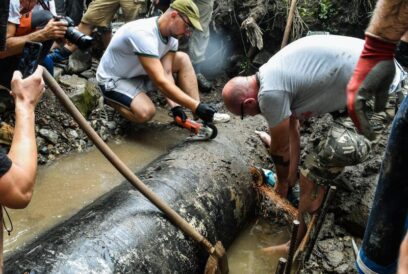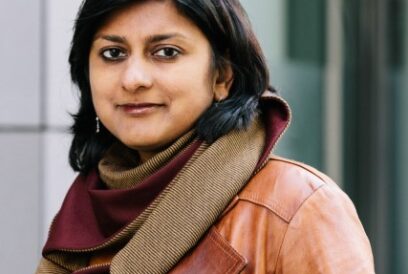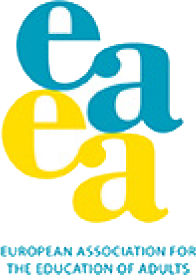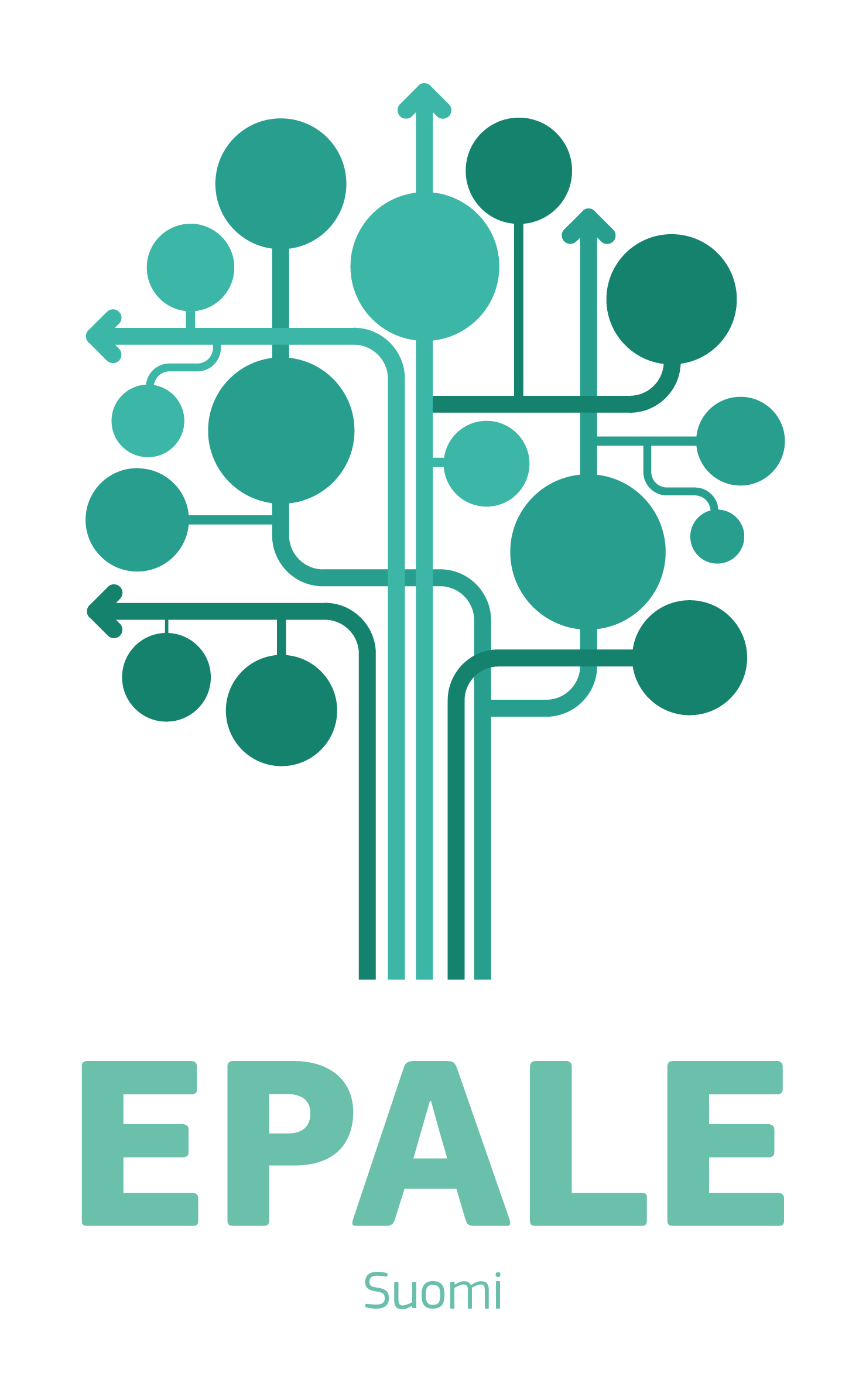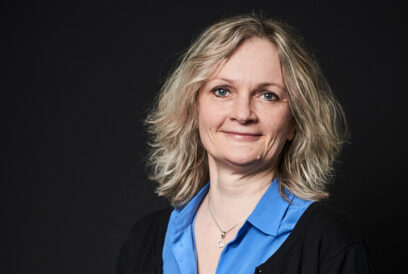
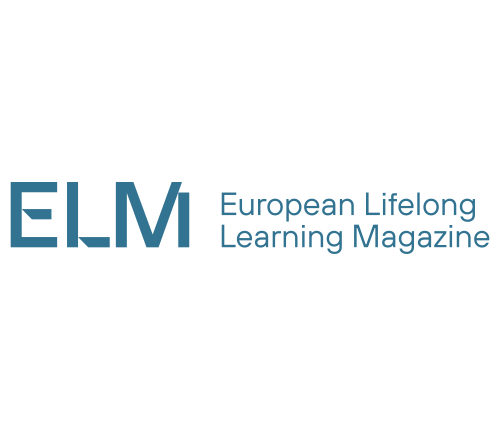
The EU searches policy synergy between cultural and education policies.
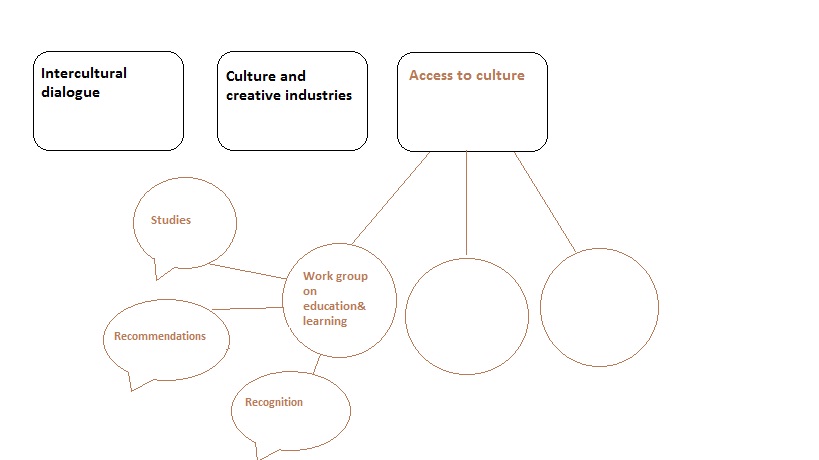
In 2007, the EU decided on a strategy for collaboration between member states on cultural policy. One of the first actions has been the work of the Access to Culture Civil Society Dialogue Platform within which a work group has been dedicated to education and learning.
With the communication from the European Commission on a European Agenda for Culture in a globalizing World (EU COM, 2007) the European Union took a decisive step towards collaboration within the policy field of arts and culture. The communication was seen as a statement of similar importance to the arts sector as had been the one from 2001 on making a European Area of Lifelong Learning a Reality to the world of education (EU COM, 2001).
Three civil society dialogue platforms were established by the Commission in the spring 2008 on Intercultural Dialogue, Culture and Creative Industries and on Access to Culture.
The Access to Culture platform (ACP) originally included 36 organisations of arts and culture on European level. The ACP organised its work in three work groups of which one was dedicated to the role of access to culture in education and learning (see picture above). During the mandate and function period of the platforms in 2008-2013 the experience of the work group on education and learning has been going through three different phases: The production of policy recommendations, conducting studies and the struggle for recognition. The three phases are briefly presented in the following.
The recommendations
The first phase of the work was conducted through 2008 and 2009 and resulted in recommendations which formed part of the policy paper presented by ACP to the Commission in August 2009. The discussions within the ACP were very interesting as they clearly revealed the broadness in perspective and potential of learning in experiences with arts and culture (ACP, 2009). This potential is illustrated in the following:
- Education provides access to culture for European citizens with the aim to develop participation in and the understanding of culture and the arts, which will enrich their daily lives. Access to culture through education can take place in various contexts of formal education (ranging from cultural education in primary and secondary education to higher arts education), and non-formal education (organised educational activities outside a formal educational setting) to informal learning (in a ‘real life’ context , where learning can also take place in an implicit way).
- Another important dimension is the access to education through culture. Learning through cultural experiences can develop creative, personal and interpersonal skills that can be essential transferable skills for workers in a knowledge-based society.
- An increased exchange and cooperation in the fields of education and culture will lead to enhanced intercultural understanding and social cohesion at the European level.
- A closer synergy between education and culture will support the development of the creative and cultural industries, which show an enormous potential for employment and growth within the overall EU economy.
- A closer synergy between education and culture will also support the implementation of the Key Competences for Lifelong Learning: not only Key Competence nr. 8 (Cultural Expression and Awareness) will be reached by offering access to culture through education, but in addition other Key Competences can be achieved by providing access to education through culture, such as Learning to Learn , Social and Civic Competences, Sense of initiative and entrepreneurship and Digital Competence.
- Finally, the working group would like to remind that ‘free movement of knowledge and innovation’ is of utmost importance within the European Union, and that access to culture contributes to the knowledge economy through education and lifelong learning. In this context, the working group underlines there should be a fair balance between the protection of intellectual property and the access to creative works in the context of learning practices.
The recommendations above are very general in character. That reflects the difficulties in the beginning of the discussions within the ACP. In short the difficulties were about different priorities between, on one side art schools and others who primarily teach arts and culture and on the other side theatres, museums and others who primarily produce experiences with arts and culture. The first months of work in ACP were very much dedicated to diplomacy between these groupings. Therefore the recommendations published after the first year of work had to be broad in their scope.
The studies
During 2010-2012 the ACP assigned The Nordic Centre of Heritage Learning and Education to collect and analyse best practise examples on learning through experiences with artistic or cultural engagement.
The 60 examples were collected through a process whereby all participating organisations asked their members to look for and report on activities which they themselves saw as interesting examples of learning through cultural engagement beyond the usual.
Overall, the material represents the sectors of heritage (especially museums) with 23 examples, music with 10 examples, theatre (especially drama) with 7 examples and adult education with 13 examples. The collected material also includes 5 examples from building conservation and architecture and one example from a library and one from modern art (ACP, 2011).
This may reflect that these organisations were most active in the process of collecting examples but there seems to be no particular indications of that. The composition may also be the result of a tendency that member institutions of the dominating cultural sectors here have a relatively active engagement in developing extraordinary meetings between education and culture.
The result of the analysis of the examples collected was that:
- The cultural sector is capable of producing effective pedagogical programmes which are original as they are based on the engagement with culture;
- The cultural sector creates learning activities which reach people in a true and real lifelong and lifewide meaning; and
- The cultural sector offers learning of several key competences and cultural awareness which is just the tip of the competence iceberg.
Hands-on Shakespeare
A good example of an extraordinary meeting of culture and education is from The Weald and Down Open Air Museum in Sussex, United Kingdom (ACP, 2009). The Barclays Special Educational Needs Project developed focus days designed to suit children with special educational needs (SEN’s). These themed focus days were: Shakespeare, Working Animals, Fire and Light and Harvest.
The aims were two-fold: to develop a sustainable programme of activities for this educational group, which included children with physical, intellectual and behavioural problems, and to encourage staff from Barclays Bank to attend the Museum on those days as assistants in a voluntary capacity. The corresponding outcomes were to increase social participation and interaction for the children involved, and, for the participating bank employees, to spark an interest in community and voluntary activities.
For instance when Shakespeare is studied in a mainstream school setting, it is very easy to take the students to the theatre to see one of his plays. For the SEN children this is difficult. By bringing the SEN children to the Museum for the Shakespeare day, plays could be presented in short excerpts, accompanied by appropriate workshops such as 16th century cookery and apothecary sessions.
Bringing the children to the Museum site offered its own benefits. For example, during the Working Animals days we were able to bring the children into close contact with the animals at the Museum. On the Fire and Light day, the children were able to have the often new experience of feeling the heat of an open fire. During the Harvest day they experienced the sights, sounds and smells of autumn.
In a follow up study the ACP went a little further and offered an attempt to grasp what happens in some very creative meetings between culture and education (ACP, 2012). That is important because the creativeness which comes out of the meeting is what everybody involved always refer to when they think back. Out of a study of more than a hundred collected examples from all over Europe seven examples were used to give a first understanding of what happens in the creative meetings between culture and education and to illustrate what creative partnerships are all about.
An example from Hungary illustrates how a creative partnership is often a partnership from very different parts of society (ACP, 2012). The Hungarian Drama and Theatre in Education Association (HUDEA) together with The Hungarian National Crime Prevention Centre and Marczibányi Cultural Centre collaborated in the project Impulse camp during the period 2003-2005.
Cross-society drama camp
In the centre of the project was a complex drama camp for 11 to 16-year-olds. The main aim of this project was to offer students a learning experience based on progressive pedagogies and a teaching methodology that formal school education rarely provides. During the five intense days spent together, the drama camp created a framework where the work of the drama teachers and theatre in education companies could have a major impact on how the children and young people relate to issues that are important for their age-group.

Learning through narrative: drama camp in Hungary.
Photo: Copyright HUDEA & Marczibanyi Cultural Centre
Materials were prepared for three separate groups of pupils aged 11-12, 13-14, and 15-16. Two groups of children, with no more than 45 people in each group, worked side by side with 5 – 6 drama teachers leading two sub-camps at the same site. The activities of these camps were run by the drama teachers, while the school teachers accompanying the pupils were responsible for the spare time. Three programmes were developed by experts and based on previous work done by Round Table Theatre in Education Centre.
The programmes were based on theatre in education methodology, with drama teachers also working as actors and sharing parts of the narratives through theatre and then engaging the participants of the project. The pupils came from thirty different places in Hungary, from tiny villages to the capital city, which meant that they had very different socio-economic backgrounds and experiences. Experienced drama teachers and actor-teachers working in theatre in education companies were invited to take part in the course preparing them to work in the project. These courses were also designed to make everyone familiar with all three programmes. So eventually all of the trainers worked in all three programmes, giving them further experience.
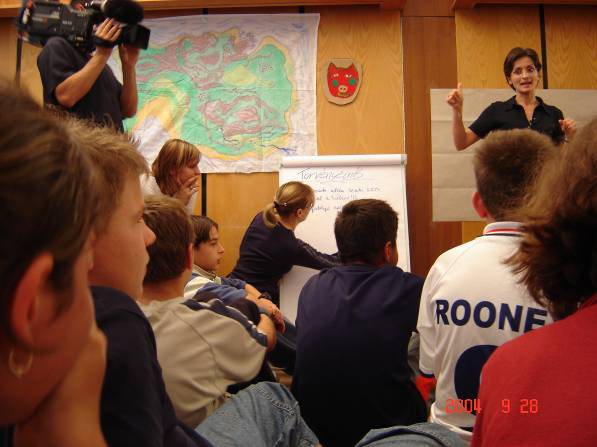
Listening in.
Photo: Copyright HUDEA & Marczibanyi Cultural Centre
With this study of extraordinary meetings between cultural experiences and education untraditional creative partnerships were discovered. Exactly that seems to be the key behind the success of these learning experiences. A closer look at the examples demonstrated how learning through art and culture is the fertilizer which Europe needs for development of key competences and inclusive citizenship.
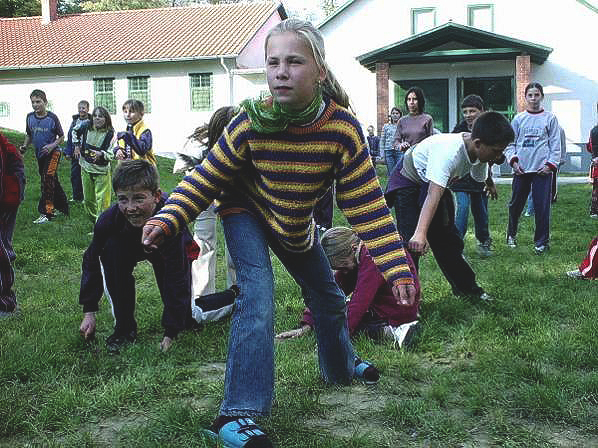
The drama camps brough together children from different age and societal groups.
Photo: Copyright HUDEA & Marczibanyi Cultural Centre
The struggle for recognition
The thinking above has been well received by the Commission and the Council and the results of the studies were presented and discussed at the arts and culture conference hosted by the Council in Warsaw 2011(Zipsane, 2011).
However ACP had earlier realised that acceptance for a broader view of learning through cultural engagement on the political agenda demanded much more. During the year from the presentation of the original recommendations to the Commission in July 2009, to summer 2010 a parallel work group under the European Council on developing synergies between education and culture finalised their work. The delegates were appointed by the departments of education and culture in the member states. Even though representatives of the ACP had reported to the OMC group on the findings in the collected extraordinary meetings between education and culture, this is not reflected in the final report from the OMC group. That report focuses almost exclusively on formal education – primarily the school sector – and the thinking is mostly about education in and about culture, and especially, art. The main perception in the report from the OMC group is therefore about seeing non-formal cultural education as a complement to formal education – primarily schools, and recommending the creation of special relations between schools and cultural institutions or artists (EU OMC, 2010).
The work of the ACP and others did however change the perception of the OMC. In meetings with participants in the OMC work and with officials from the Commission ACP presented the results from the studies and even some national studies and also especially made the case of the importance to balance between “learning about arts and culture” and “learning through arts and culture”. In the next report from the group it said that
“Culture and creativity are thus necessary elements of personal development. Supporting their acquisition by all is essential to ensure that education achieves its aim to equip everybody with the necessary resources for personal fulfilment and development, social inclusion, active citizenship and employment.” (EU OMC 2012)
The future political task
There is hope! The history of the Access to Culture Platform and its possible impact on policy development in the area of education and culture is a story which has revealed that even despite many positive signs, this continues to be a field that is still at the margin of the political agenda.
The world of education is to some degree a market place with sellers and buyers. It does have many of the characteristics which we find in other markets. This means that as long as learning producers (sellers) in arts and culture are seen as competitors for “customers” (meaning learners) – the professional world of education will be reluctant to accept the value of learning through engagement with arts and culture. A growing amount of research results however indicates value for money when engagement with arts and culture is included in the thinking of professional learning and education providers.
It is necessary to move forward alliances between the two worlds of arts and culture on the one hand and education and learning on the other. A first step in that direction was the launch of an ambitious document on synergies between education and culture which was presented in the spring 2013 (EUCIS-LLL, ACP, CAE 2013). Here the European platform for lifelong learning, the Access to Culture Platform and the leading European lobby organisation of culture called Culture Action Europe presented a framework for an alliance between the sectors. The key messages are the following:
- Synergies and consistency between the education, training, youth, sport and culture sectors shall be enhanced in future EU strategies and policies.
- A partnership approach could be developed involving stakeholders from all sectors covered by the Commission’s Directorate General on Education, Training, Youth, Culture and Sport in order to achieve a genuine lifelong and lifewide approach to learning.
- A better cooperation is also needed among the relevant departments within EU institutions to reinforce those sectors’ complementarities.
- Cultural engagement is a key contribution to the acquisition of transversal skills and should be recognised as such at EU level.
- Cultural engagement is also crucial for a broader access to education for vulnerable target groups at risk of educational disadvantage.
- Quality learning in the field of culture and the arts is essential as those sectors have a central role in national curricula from a very young age.
- Recent policy reforms at EU level on validation should pave the way for a greater involvement of cultural actors in validation mechanisms.
Once again as when arts and culture organisations themselves in 2008/2009 discussed common ground and, in their first try, were relatively broad in their scope, we have to realize that the same broad scope is seen on this first effort together with the leading European organization on adult education. But I think we have to be honest and open about the simple need to begin somewhere.
Much more needs to be done! The latest indicator of that is the “Rethinking Education” policy document from the Commission where the tasks for education in Europe are clearly presented but with no recognition of possible use of the learning and education potential in arts and culture (EU COM 2012).
The history of Access to Culture Platform illustrates in the area of arts & culture/learning & education how progress in recognition will be a long process with many ups and downs.
References
Access to Culture Platform. (2009). Civil Society Platform on Access to Culture – Policy Guidelines.
http://www.access-to-culture.eu/accesstoculture/13/create/
Access to Culture Platform. (2011). We are more! The overlooked Potential of learning through cultural engagement. Observatory Pascal, www.obs-pascal.com and European Union Structure Dialogue on Access to Culture, www.access-to-culture.eu
Access to Culture Platform. (2012). Untraditional Creative Partnerships – Seven Wonders of Arts and Culture in Education. Observatory Pascal, www.obs-pascal.com and European Union Structure Dialogue on Access to Culture, www.access-to-culture.eu
EUCIS-LLL, Access to Culture Platform & Culture Action Europe. (2013). Building Synergies between Education and Culture. Brussels March 2013
European Commission. (2001). Making a European Area for Lifelong Learning a Reality. COM (2001), 678 Final, Brussels 21st November 2001.
European Commission. (2007). Communication from the Commission to the European Parliament, the Council, the European Economic and Social Committee and the Committee of the Regions on a European agenda for culture in a globalizing world. COM 2007 – 242 final, Brussels 10th May 2007
European Commission. (2012). Communication from the Commission to the European Parliament, the Council, the European Economic and Social Committee and the Committee of Regions on Rethinking Education: Investing in skills for better socio-economic outcomes. COM (2012) 669 Final, Strasbourg 20th November 2012
European Council -Open Method of Coordination. (2010). European Agenda for Culture – Open Method of Coordination – Working Group on developing synergies with education, especially arts education – Final Report. Brussels June 2010.
European Council –Open Method of Coordination. (2012). European Agenda for Culture – Open Method of Coordination – Working Group on Better Access and Wider Participation in Culture. Brussels October 2012
Zipsane, H. (2011). We are more! Learning through cultural engagement, pp. 288-291 in Michal Szpiller (Ed.) Competences in Culture. Post Conference Publication 18-20 July 2011 in Warsaw, Ministry of Culture and National Heritage – Warsaw
